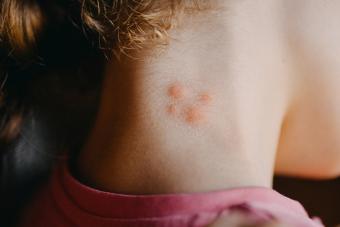
While understanding how to treat cuts and scrapes is essential, it's helpful to know that it's also fairly simple. Knowing how to properly care for a basic, minor skin injury like a scrape or cut is especially important if you have children (or regularly care for children). Even if you don't, though, this information will come in useful if you ever suffer a scrape while going about your everyday business.
About Cuts and Scrapes
They usually appear suddenly and without warning - often you may not even realize you have a minor cut or scrape until much after the fact. Scrapes are simply shallow abrasions that occur when the skin is torn, usually from scratching against a sharp object or falling on a solid surface (like a road or even a carpet). Scrapes are most commonly seen in young children, and most often occur during the spring and summer months, when the skin is most exposed. Cuts are similar - open wounds that occur through some sort of accidental impact with an object or via a fall. Objects don't have to be large to cause painful cuts; everyone knows the ouch factor involved in receiving an always unpleasant paper cut!
How to Treat Cuts and Scrapes
If you've suffered from a cut or scrape, rest assured that it's relatively easy to treat! Note before you begin any self-treatments that you will need to seek medical attention if your cut or scrape:
- is deep
- has occurred over a joint in the body
- has sliced a layer off the skin
- has occurred above the site of a broken bone
- has occurred as the result of a dangerous object, like glass, which can get into the wound
- was caused by an animal or human
If your cut or scrape does not meet any of these criteria, however, you can administer treatment at home. Follow these simple guidelines and you'll be on your way to quick healing in no time:
- Clean the wound with lukewarm water and a mild, anti-bacterial cleanser. If debris exists on the wound itself, soak a pair of tweezers in alcohol and use them to carefully and gently extract the foreign matter. If the debris is too deeply embedded within the cut, avoid doing this yourself; seek medical attention instead.
- If the bleeding does not stop on its own, apply gentle pressure to the cut or scrape with a clean, dry cloth. Hold it for up to half an hour if needed, but remember to keep the pressure light. (Note that if the injury does not stop bleeding after this time, it's important to seek medical attention - your cut or scrape may be worse than its appearance suggests.)
- Apply an antibiotic cream, such as Neosporin, to the wound in a thin layer. This will keep the injury site moist, encourage a speedier healing process and prevent infections from forming. If you develop a rash from the cream, discontinue use immediately.
- Keep the injury site covered with a bandage or, if the wound is slightly larger, a gauze pad. The key here is to prevent infection by keeping any harmful bacteria away from the site. After it has sufficiently healed a bit, it will benefit from being uncovered and exposed to the air.
- Be sure to change the bandage or gauze pad regularly. This is especially necessary if the injury site becomes wet, as is common in wounds located on or near the hands.
- Keep a close eye on the injury site for signs of possible skin infection. If you experience pain, redness, swelling, warmth or any type of discharge (in the form of pus, drainage or blood, for example), seek medical attention immediately.
- It is typically recommend that stitches should be given for wounds that are more than one-quarter inch deep. If the injury site is clearly large and open, or, in a much worse scenario, you can actually see muscle or fat in the wound, then it is essential to have the wound closed by a professional. Otherwise you risk developing an infection.
- Whether you hurt yourself through a fall or by scraping yourself with a knife or old nail, you should head to your doctor for a tetanus shot. This is essential for immunization, and is even more important after suffering an injury. If you haven't had your shot within the last five years, now is definitely the time to get it done.
Your Home Treatment Kit
Understanding how to treat cuts and scrapes may be important, but note just how easy it actually is. You can take care of it yourself in the comfort of your own home - just be sure to have all of the essentials on hand, so when the time comes you won't find yourself scrambling for all the necessary items.







